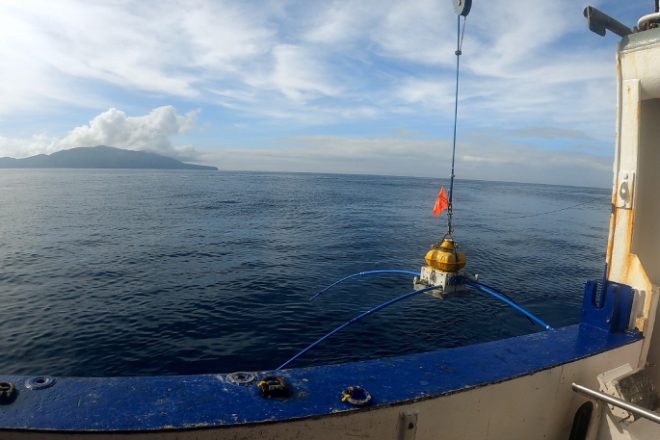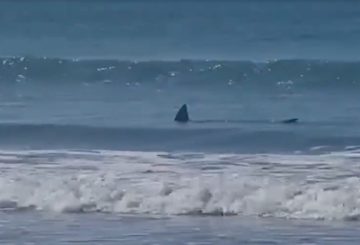Ang dalawang pananaliksik na Tangaroa ay nagsimula sa huling paglalakbay nito upang pag-aralan ang mga sistemang bulkan ng mga bulkan ng Whakaari/White at Tūhua/Mayor island. Ito ay bahagi ng programang Beneath the Waves na pinamumunuan ng GNS Science. Ang layunin ay makakuha ng mas malalim na pag-unawa sa mga trigger, panganib, at epekto ng mga potensyal na kaganapan sa bulkan tulad ng ashfall, pyroclastic flow, landslide, at tsunami.
Mag-install ng mga siyentipiko mula sa GNS Science, Scripps Institute of Oceanography, at dalawang BLAKE GNS Ambassador ang natitirang 39 sa 200 Ocean Bottom Electromagnetic sensor mula Marso 28 hanggang Abril 12. Ang mga sensor na ito ay magbibigay ng mga imahe ng mga sistemang magmatiko na nagpapakain sa mga bulkan at makikilala ang mga lugar ng aktibong hydrothermal venting.
Ang mga nakaraang paglalakbay ay nagbigay na ng bagong impormasyon tungkol sa dalas, laki, at sanhi ng mga nakaraang pagsabog, ayon kay Craig Miller, GNS Science Senior Volcano geophysicist at program leader. Ang maagang pagsusuri ay nagpapakita ng katibayan ng malalim na likido, posibleng magma, sa hilagang-kanluran ng Whakaari. Kung totoo, maaari itong makaapekto sa kung paano sinusubaybayan ang bulkan sa hinaharap. Ang aktibidad ng seismic sa lugar na ito ay maaaring magpahiwatig ng pagtaas na aktibidad
Ang mga paunang resulta mula sa mga sample ng sediment sa dubok ng dagat ay nagmumungkahi ng mas malalaking pagsabog sa huling ilang libong taon kumpara sa mga pagsabog na naitala mula noong 1800s. Nais ngayon ng koponan na imbestigahan kung ang mga pagsabog na ito ay sapat na malaki upang maghatid ng abo sa continental.
Nakilala ng data mula sa mga nakaraang survey sa ilalim ng tubig ang mga lokasyon ng nakaraang aktibidad na hydrothermal at mga aktibong pagsipsip sa ilalim ng ilalim ng Ang mga natuklasan na ito, kasama ang mga survey sa airborne na isinagawa noong unang bahagi ng 2023 gamit ang sistema ng SkyTem, ay tumutulong sa mapa ng nakaraan at kasalukuyang hydrothermal activity sa buong bulkan. Ginagamit ang impormasyong ito upang lumikha ng tumpak na mga modelo ng 3-D na nagpapakita ng mga lugar ng mahina na bato at kung saan naganap ang mga nakaraang lupa. Mahalaga ito dahil ang mga lupa ay maaaring maging sanhi ng pagsabog o maging sanhi ng tsunami.
“Ang subsurface imaging ay nag-aambag sa mga matatag na numero na simulasyon at modelo na nagsisimula naming gamitin upang masuri ang maraming posibleng mga sitwasyon para sa Bay of Plenty mula sa hinaharap na mga kaganapan sa bulkan,” sabi ni Craig. “Kung matutukoy natin ang posibilidad at epekto ng mga panganib sa bulkan na ito, mas mahusay nating maghanda para sa kanila kapag nangyari ang mga ito.”
Ang programa ng Beneath the Waves ay isang inisyatibo na pinamunuan ng GNS na inihatid kasama ang mga kolaborasyon mula sa iba’t ibang mga unibersidad at mga organis






























































